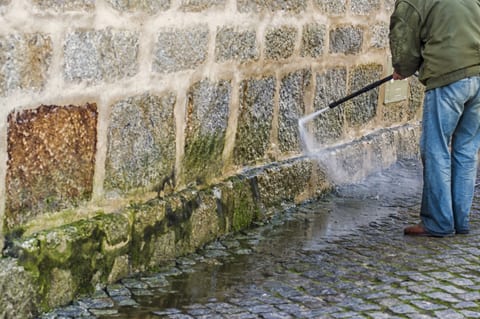
Mould spores are everywhere. They travel in moist air and can enter your home or business at any time. If you have moisture problems and/or poor ventilation in your premises there is a significant chance that you will develop a mould problem. Initially this can be detected as a musty smell or a light speckling appearance in your problem area and if left untreated it can develop into a dense, heavy growth. Mould can cause serious health problems and must be treated and cleaned up.
Before action is taken to clean and remove the mould it is essential to determine the type of surface it is growing on. Internal walls made from things like gyprock, plasterboard or timber panelling that have been painted or coated are the easiest to treat as they have a surface barrier that makes it harder for the mould to penetrate. Other surfaces such as brickwork, stucco, un-sealed timber, concrete and other porous or un-sealed materials will be harder to treat as the mould can penetrate and grow deep within the material.
A good treatment for sealed surfaces is a mould killer solution which can be found in a concentrated form in most hardware stores. You will also need:
-
brushes
-
drop tarps and rags
-
drying clothes
-
a full protective suit to cover your entire body
-
a filtered full face mask
-
thick rubber gloves, enclosed footwear and socks
-
a good supply of clean water.
Get all your products ready and put on all your protective clothing. Place drop tarps on items around the area to be treated and fill a refillable spray bottle with the solution. Spray your brush with the solution and apply to the affected surface ensuring the brush gets into all cracks or crevices. Leave the area for 30 mins to allow the solution to work then remove any excess solution and wipe dry. Clean up the area and keep it well ventilated until vapours can no longer be detected.
If your surface is porous firstly determine how badly affected the area is and whether it is able to be treated or if it is best to remove and replace it. If you can treat it, you will need:
-
External surface mould killer
-
brushes
-
face mask
-
thick rubber gloves
-
enclosed footwear and socks
-
a good supply of clean water
Like with sealed surfaces, get your products ready, put on your protective clothing and place your drop tarps around the area to be treated. Apply some solution onto the affected area and scrub deep into the surface ensuring you get into any cracks and crevices. Remove and excess and wipe down with rags. Clean up the area when done and keep it well ventilated. Allow several days for this treatment to disinfect and kill the mould. You may need to repeat this process depending on the severity of the growth. If there is no improvement after two weeks, apply some more solution and repeat the process. If this still does not improve the mould growth it is time to consider removing and replacing the affected material.
Once you have eliminated your mould problem it is essential to determine the cause of it and act on preventing it from reoccurring. Remember, prevention is better than cure!
If your property has a mould problem and is located in the Sydney, Central Coast or Newcastle areas contact the professionals at Mould Removal today on 0408 681034 or email info@mouldremoval.net.au for an obligation free quote to rid your property of potential health problems.
This is general advice and you should check the suitability of any surface prior to applying any type of solution. When using any concentrated solution ensure correct protective clothing and equipment is used as per the manufacturer’s directions.
